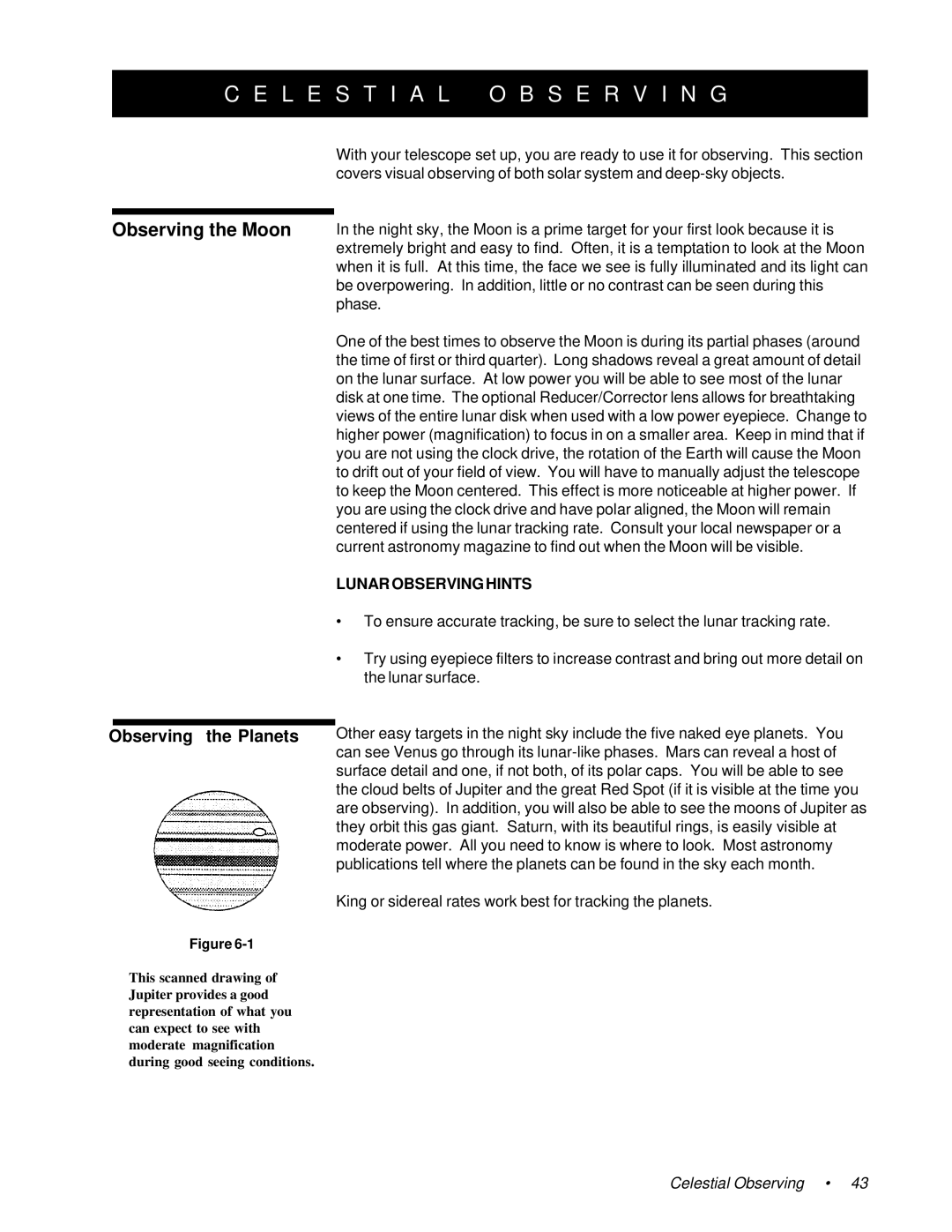
C E L E S T I A L O B S E R V I N G
Observing the Moon
With your telescope set up, you are ready to use it for observing. This section covers visual observing of both solar system and
In the night sky, the Moon is a prime target for your first look because it is extremely bright and easy to find. Often, it is a temptation to look at the Moon when it is full. At this time, the face we see is fully illuminated and its light can be overpowering. In addition, little or no contrast can be seen during this phase.
One of the best times to observe the Moon is during its partial phases (around the time of first or third quarter). Long shadows reveal a great amount of detail on the lunar surface. At low power you will be able to see most of the lunar disk at one time. The optional Reducer/Corrector lens allows for breathtaking views of the entire lunar disk when used with a low power eyepiece. Change to higher power (magnification) to focus in on a smaller area. Keep in mind that if you are not using the clock drive, the rotation of the Earth will cause the Moon to drift out of your field of view. You will have to manually adjust the telescope to keep the Moon centered. This effect is more noticeable at higher power. If you are using the clock drive and have polar aligned, the Moon will remain centered if using the lunar tracking rate. Consult your local newspaper or a current astronomy magazine to find out when the Moon will be visible.
LUNAR OBSERVING HINTS
•To ensure accurate tracking, be sure to select the lunar tracking rate.
•Try using eyepiece filters to increase contrast and bring out more detail on the lunar surface.
Observing the Planets
Figure
This scanned drawing of Jupiter provides a good representation of what you can expect to see with moderate magnification during good seeing conditions.
Other easy targets in the night sky include the five naked eye planets. You can see Venus go through its
King or sidereal rates work best for tracking the planets.
Celestial Observing • 43
